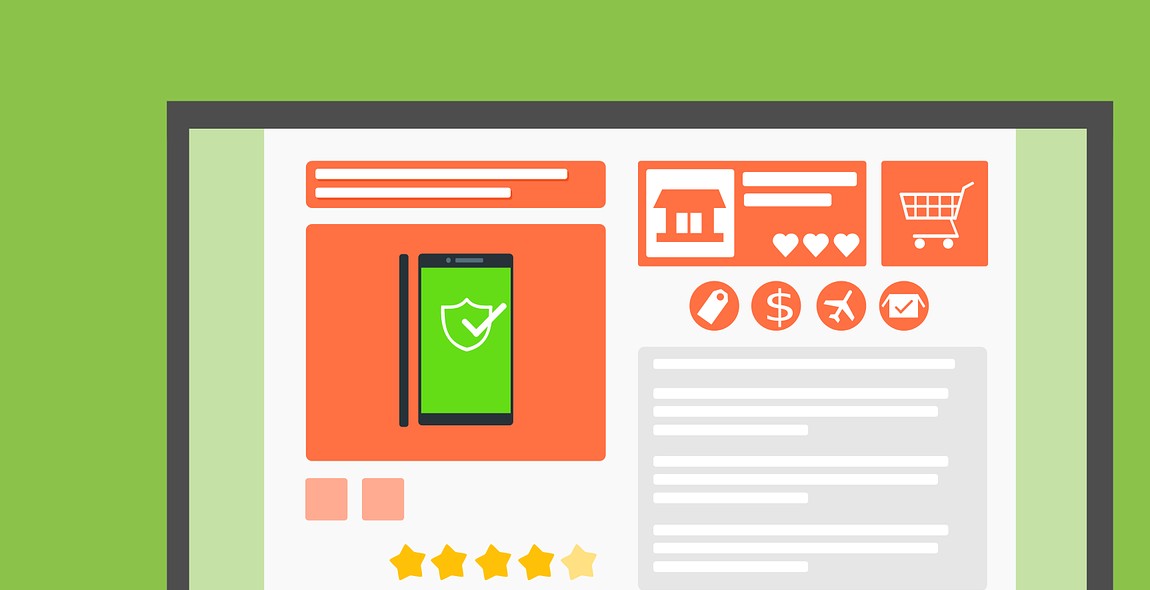Introduction: Building an Online Retail Business
In today’s digital age, e-commerce has become a significant part of the retail industry. E-commerce, also known as electronic commerce, refers to the buying and selling of goods and services over the internet. It has made shopping more convenient, accessible, and cost-effective for consumers, while also providing businesses with a platform to reach a broader audience and increase their sales revenue.
Starting an e-commerce store can be a daunting task, but with the right strategies and tools, it can be a rewarding and profitable venture. In this article, we will guide you through the process of launching a successful e-commerce store, from choosing a niche and creating a website to marketing and managing your online business.
What is E-commerce?
E-commerce encompasses a wide range of online transactions, including business-to-business (B2B), business-to-consumer (B2C), and consumer-to-consumer (C2C) sales. It involves various types of products and services, such as physical goods, digital products, subscriptions, and online courses.
According to Statista, global e-commerce sales are projected to reach $6.54 trillion by 2022, highlighting the immense potential and growth opportunities in this industry. By launching an e-commerce store, you can tap into this lucrative market and establish a successful online retail business.

Market Research
Before launching an e-commerce store, it is crucial to conduct thorough market research to identify your target audience and analyze your competitors. This information will help you create a successful online retail business.
Identify Your Target Audience
The first step in market research is to identify your target audience. Who are the people that will be interested in your products? What is their age range, gender, location, and interests? Understanding your target audience will help you create a marketing strategy that resonates with them.
Start by creating buyer personas, which are fictional representations of your ideal customers. These personas should include demographic information and psychographic information, such as their interests, values, and behavior. You can create these personas by conducting surveys, analyzing social media data, and studying your existing customer base.
Once you have identified your target audience, you can tailor your product offerings and marketing messages to appeal to them. For example, if your target audience is young mothers, you might focus on selling baby products and creating content that addresses their unique challenges and needs.
Analyze Your Competitors
In addition to understanding your target audience, it is important to analyze your competitors. Who else is selling similar products or targeting the same audience? What are their strengths and weaknesses?
Start by conducting a competitive analysis, which involves researching your competitors’ websites, social media accounts, and marketing strategies. Look for opportunities to differentiate your brand and products from theirs. For example, if your competitors are all offering free shipping, you might differentiate yourself by offering faster shipping or a better return policy.
You can also use tools like Google Trends and SEMRush to identify keywords and search terms that your competitors are targeting. This information can help you optimize your website and content for search engines, making it easier for your target audience to find you.
Ultimately, conducting thorough market research will help you create a successful e-commerce store that resonates with your target audience and differentiates you from your competitors.

Business Plan
Before launching an e-commerce store, you need to have a solid business plan in place. This plan should define your unique selling proposition, set your business goals, and create a budget.
Define Your Unique Selling Proposition
Your unique selling proposition (USP) is what sets your e-commerce store apart from your competitors. It is the reason why customers will choose to shop at your store instead of others.
To define your USP, you need to consider what makes your products or services unique. This could be the quality of your products, your exceptional customer service, or your competitive pricing. Once you have identified your USP, make sure to highlight it in your marketing efforts to attract customers.
Set Your Business Goals
Setting clear business goals is essential for the success of your e-commerce store. These goals should be specific, measurable, achievable, relevant, and time-bound.
Some common business goals for e-commerce stores include increasing sales, improving customer retention, and expanding into new markets. Make sure to regularly evaluate your progress towards these goals and adjust your strategies as needed.
Create a Budget
Creating a budget is crucial for the financial health of your e-commerce store. It will help you determine your startup costs, ongoing expenses, and projected revenue.
When creating a budget, make sure to consider expenses such as website design and development, inventory, marketing, and payment processing fees. It is also important to set aside funds for unexpected expenses and to regularly review your budget to ensure that you are staying on track.
| Expense | Cost |
|---|---|
| Website design and development | $5,000 |
| Inventory | $10,000 |
| Marketing | $2,000 |
| Payment processing fees | $500 |
| Unexpected expenses | $1,000 |
| Total | $18,500 |
By defining your unique selling proposition, setting clear business goals, and creating a budget, you will be well on your way to launching a successful e-commerce store.

Choosing the Right Platform
One of the most critical decisions when launching an e-commerce store is choosing the right platform. The platform you choose will determine the functionality, flexibility, and scalability of your store. There are two main types of e-commerce platforms: self-hosted and hosted platforms.
Self-Hosted E-commerce Platforms
Self-hosted e-commerce platforms require you to install the platform on your own web server. This means you are responsible for the maintenance, security, and updates of the platform. Self-hosted platforms offer more flexibility and customization options, but they require a higher level of technical expertise.
One of the most popular self-hosted e-commerce platforms is WooCommerce. It is a plugin for WordPress, the most widely used content management system (CMS) in the world. WooCommerce is free to use, but you will need to pay for hosting, domain, and SSL certificate.
| Pros | Cons |
|---|---|
| More flexibility and customization options | Requires technical expertise |
| No transaction fees | Higher maintenance and security responsibility |
| Lower cost in the long run |
Hosted E-commerce Platforms
Hosted e-commerce platforms provide a complete solution for building and managing your online store. They handle the hosting, security, updates, and maintenance of the platform. Hosted platforms are easy to use and require no technical expertise.
One of the most popular hosted e-commerce platforms is Shopify. It offers a user-friendly interface, a wide range of features, and excellent customer support. Shopify charges a monthly fee, which includes hosting, SSL certificate, and transaction fees.
| Pros | Cons |
|---|---|
| No technical expertise required | Less flexibility and customization options |
| Easy to use | Transaction fees |
| Excellent customer support | Higher cost in the long run |
Popular E-commerce Platforms
There are many e-commerce platforms available, and choosing the right one can be overwhelming. Here are some of the most popular e-commerce platforms:
- WooCommerce
- Shopify
- BigCommerce
- Magento
- PrestaShop
- OpenCart
- Volusion
Each platform has its own strengths and weaknesses, so it’s essential to evaluate them based on your business needs and goals.

Designing Your Online Store
One of the most important aspects of launching a successful e-commerce store is designing a visually appealing and user-friendly website. Your online store should be easy to navigate, visually appealing, and optimized for search engines. Here are some key factors to consider when designing your online store:
Choosing Your Store Theme
The first step in designing your online store is choosing a theme. Your theme should reflect your brand and the products you sell. There are a variety of e-commerce platforms available that offer pre-designed themes, or you can hire a designer to create a custom theme for your store.
When choosing a theme, consider the following:
- The theme should be mobile-responsive, meaning it should look great on all devices, including smartphones and tablets.
- The theme should be customizable, allowing you to make changes to the layout, colors, and fonts.
- The theme should be optimized for search engines, with clean code and fast load times.
- The theme should be user-friendly, with easy navigation and clear calls to action.
Customizing Your Store
Once you’ve chosen your theme, it’s time to customize your store to make it unique and visually appealing. Here are some key elements to consider when customizing your store:
Logo and Branding
Your logo and branding should be prominently displayed on your website. This helps establish brand recognition and builds trust with your customers. Make sure your logo is high-quality and looks great on all devices.
Color Scheme
Your color scheme should reflect your brand and the products you sell. Choose colors that are visually appealing and easy on the eyes. Avoid using too many colors, as this can be overwhelming for visitors.
Product Pages
Your product pages should be visually appealing and easy to navigate. Include high-quality product images and detailed descriptions. Use clear calls to action, such as “add to cart” or “buy now” buttons.
Navigation
Your navigation should be easy to use and intuitive. Use clear labels and organize your products into categories that make sense. Make it easy for visitors to find what they’re looking for.
Checkout Process
Your checkout process should be streamlined and easy to use. Make sure visitors can easily add or remove items from their cart, and provide clear instructions throughout the checkout process. Offer multiple payment options, such as credit card or PayPal.
Search Functionality
Include a search bar on your website to make it easy for visitors to find what they’re looking for. Make sure your search functionality is accurate and provides relevant results.
| Element | Considerations |
|---|---|
| Logo and Branding | High-quality logo, prominently displayed |
| Color Scheme | Reflects brand and products, visually appealing |
| Product Pages | High-quality images, detailed descriptions, clear calls to action |
| Navigation | Easy to use, clear labels, organized into categories |
| Checkout Process | Streamlined and easy to use, multiple payment options |
| Search Functionality | Accurate and provides relevant results |
By considering these key factors when designing your online store, you can create a visually appealing and user-friendly website that is optimized for search engines and encourages visitors to make a purchase.

Product and Inventory Management
One of the most important aspects of running a successful e-commerce store is managing your product inventory. This involves sourcing products, tracking inventory levels, and ensuring that you always have enough stock on hand to meet customer demand.
Product Sourcing
When it comes to sourcing products for your online store, there are several options available. You can choose to manufacture your own products, source products from wholesalers or distributors, or even dropship products directly from manufacturers.
If you choose to manufacture your own products, you will need to invest in the necessary equipment and raw materials. This can be a costly and time-consuming process, but it allows you to have complete control over the quality and design of your products.
Sourcing products from wholesalers or distributors is a popular option for many e-commerce store owners. This allows you to purchase products in bulk at discounted prices, which can increase your profit margins. However, you will need to research and vet potential suppliers to ensure that they are reliable and offer high-quality products.
Dropshipping is another option for sourcing products for your online store. With dropshipping, you partner with a manufacturer or wholesaler who handles the fulfillment and shipping of orders directly to your customers. This can be a convenient and cost-effective way to manage your inventory, but you will need to carefully choose your dropshipping partners to ensure that they are reliable and offer high-quality products.
Inventory Management
Effective inventory management is crucial for the success of your e-commerce store. You need to ensure that you always have enough stock on hand to meet customer demand, without tying up too much capital in excess inventory.
One strategy for managing your inventory is to use a just-in-time (JIT) approach. With JIT, you only order products from your suppliers when you have a confirmed order from a customer. This can help you minimize your inventory holding costs and reduce the risk of overstocking.
Another strategy for managing your inventory is to use an automated inventory management system. This can help you track inventory levels in real-time, set up automatic reordering processes, and analyze sales data to optimize your inventory levels.
Regardless of the approach you choose, it is important to regularly review and update your inventory management strategies to ensure that they are effective and efficient.
Conclusion
Effective product and inventory management are essential for the success of your e-commerce store. By carefully sourcing your products and implementing effective inventory management strategies, you can ensure that you always have enough stock on hand to meet customer demand, while also maximizing your profit margins.

Payment and Shipping Options
One of the most important aspects of launching a successful e-commerce store is providing reliable and efficient payment and shipping options for your customers. In this section, we will discuss the key components of payment gateway integration, shipping, and fulfillment, and how to optimize these processes for your e-commerce business.
Payment Gateway Integration
Payment gateway integration is the process of connecting your e-commerce store to a payment processing system that allows your customers to securely and easily make payments for their purchases. There are many payment gateway options available, such as PayPal, Stripe, Authorize.net, and many more.
When choosing a payment gateway, it is important to consider factors such as transaction fees, security, and ease of use. You should also ensure that the payment gateway integrates seamlessly with your e-commerce platform.
Once you have chosen a payment gateway, you will need to set up an account and configure it with your e-commerce store. This typically involves adding the payment gateway’s API key to your e-commerce platform and configuring the payment settings to ensure that payments are processed correctly.
Shipping and Fulfillment
Shipping and fulfillment are critical components of any e-commerce business. These processes involve getting the purchased products to the customer in a timely and efficient manner. There are several key factors to consider when setting up your shipping and fulfillment processes:
- Shipping rates: You will need to determine the shipping rates for your products based on factors such as weight, size, and destination.
- Shipping options: You should offer a range of shipping options to cater for different customer needs, such as express shipping, standard shipping, and international shipping.
- Tracking: Providing tracking information for orders can help reduce customer inquiries and improve overall customer satisfaction.
- Fulfillment: Fulfillment involves the process of receiving, processing, and shipping orders. You can choose to fulfill orders in-house or outsource to a third-party fulfillment provider.
When setting up your shipping and fulfillment processes, it is important to consider your overall business strategy, customer needs, and budget. You should also regularly review and optimize these processes to ensure that they are efficient and cost-effective.
Conclusion
In conclusion, providing reliable and efficient payment and shipping options is critical to the success of any e-commerce business. By carefully selecting and integrating payment gateways, and optimizing your shipping and fulfillment processes, you can provide a seamless and enjoyable customer experience that will help drive sales and grow your business.

Marketing Your E-commerce Store
Once your e-commerce store is up and running, the next step is to market it effectively to drive traffic and sales. There are several marketing strategies you can use to promote your online retail business, including search engine optimization (SEO), social media marketing, and email marketing.
Search Engine Optimization (SEO)
SEO is the process of optimizing your website to rank higher in search engine results pages (SERPs) for relevant keywords and phrases. This can help increase visibility and drive organic traffic to your e-commerce store. Here are some SEO tips to consider:
- Research and target relevant keywords related to your products or services
- Create high-quality, informative content that incorporates your targeted keywords
- Optimize your product pages with keyword-rich titles, descriptions, and URLs
- Ensure your website is mobile-friendly and has a fast loading speed
- Build high-quality backlinks from reputable websites in your industry
By implementing these SEO strategies, you can improve your e-commerce store’s visibility and attract more organic traffic from search engines.
Social Media Marketing
Social media marketing involves using social media platforms like Facebook, Instagram, and Twitter to promote your e-commerce store and engage with your target audience. Here are some social media marketing tips to consider:
- Create a social media marketing plan that outlines your goals, target audience, and content strategy
- Post regular updates and engaging content that encourages likes, shares, and comments
- Use social media advertising to target specific demographics and promote your products or services
- Engage with your followers and respond to comments and messages promptly
- Partner with social media influencers to promote your e-commerce store to their followers
By leveraging the power of social media, you can increase brand awareness, drive traffic to your e-commerce store, and ultimately boost sales.
Email Marketing
Email marketing involves sending promotional emails to your subscribers to promote your e-commerce store and products. Here are some email marketing tips to consider:
- Build a targeted email list of subscribers who have opted-in to receive your emails
- Create engaging email content that showcases your products or services and encourages clicks
- Segment your email list based on demographics, interests, and buying behavior to personalize your emails
- Include clear calls-to-action (CTAs) in your emails that encourage subscribers to take action
- Test and optimize your email campaigns to improve open rates, click-through rates, and conversions
By implementing these email marketing strategies, you can nurture leads, drive repeat purchases, and increase customer loyalty for your e-commerce store.
| Marketing Strategy | Key Benefits |
|---|---|
| Search Engine Optimization (SEO) | Increase visibility and drive organic traffic to your e-commerce store |
| Social Media Marketing | Boost brand awareness, drive traffic, and increase sales through social media platforms |
| Email Marketing | Nurture leads, drive repeat purchases, and increase customer loyalty through targeted email campaigns |
Overall, a successful e-commerce store requires a comprehensive marketing strategy that incorporates SEO, social media marketing, and email marketing. By implementing these strategies effectively, you can attract more traffic, generate more leads, and ultimately drive more sales for your online retail business.

Customer Service and Support
Providing exceptional customer service is a crucial aspect of running a successful e-commerce store. It can be the difference between a one-time sale and a loyal customer. Here are some tips to help you provide top-notch customer service:
1. Be Responsive
Responding to customer inquiries and concerns in a timely manner is essential. Make sure you have a system in place to handle customer inquiries and that you respond promptly. This can be through email, phone, or live chat.
2. Be Knowledgeable
Make sure you and your customer service team are knowledgeable about your products and services. This will help you answer customer questions accurately and efficiently.
3. Be Friendly
Being friendly and approachable can go a long way in making a customer feel valued. Use positive language and tone in your communication with customers.
4. Offer Multiple Contact Options
Provide customers with multiple ways to get in touch with you, such as email, phone, live chat, and social media. This will make it easy for customers to reach out to you in the way they prefer.
5. Handling Returns and Refunds
Handling returns and refunds can be a challenge, but it’s an important part of providing good customer service. Here are some tips to help you handle returns and refunds:
a. Have a Clear Return Policy
Make sure you have a clear and easily accessible return policy. This will help customers understand the process and reduce confusion.
b. Respond Promptly
Respond to return and refund requests promptly. This will help you resolve the issue quickly and keep the customer satisfied.
c. Be Flexible
Be flexible with your return and refund policy. Consider offering exchanges or store credit as an alternative to refunds.
d. Communicate Clearly
Communicate clearly with the customer throughout the return and refund process. Keep them updated on the status of their request and provide them with any necessary information.
e. Learn from Feedback
Use feedback from returns and refunds to improve your products and services. This can help you identify areas for improvement and prevent similar issues from happening in the future.
| Key Takeaways: |
|---|
| Providing exceptional customer service is crucial for a successful e-commerce store. |
| Be responsive, knowledgeable, friendly, and offer multiple contact options. |
| Have a clear return policy, respond promptly, be flexible, communicate clearly, and learn from feedback when handling returns and refunds. |

Conclusion
Launching a successful e-commerce store requires a lot of hard work, dedication, and patience. However, by following the steps outlined in this article, you can increase your chances of success and create a thriving online retail business.
Key takeaways
- Develop a comprehensive business plan that outlines your goals, target market, and key strategies.
- Choose the right e-commerce platform and tools based on your business needs and budget.
- Optimize your website for search engines and user experience to attract and convert more customers.
- Create a strong brand identity and marketing strategy to build trust and loyalty with your audience.
- Continuously analyze and improve your performance metrics to identify areas for growth and optimization.
Final thoughts
Launching an e-commerce store is not an easy feat, but it can be a rewarding and profitable venture if done correctly. Remember to stay focused on your goals, always put your customers first, and keep learning and adapting to the ever-changing e-commerce landscape.
| Need help launching your e-commerce store? | Contact us today to learn how our team of experts can help you build and grow your online retail business. |
